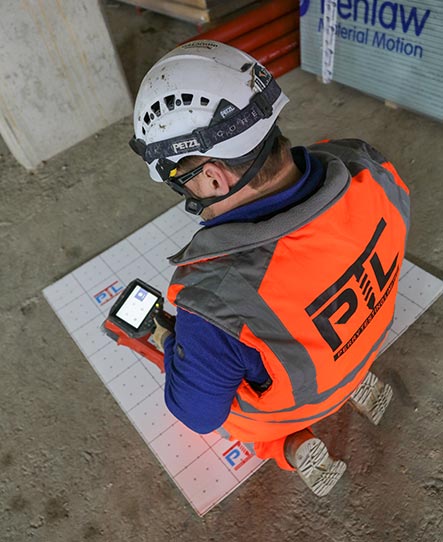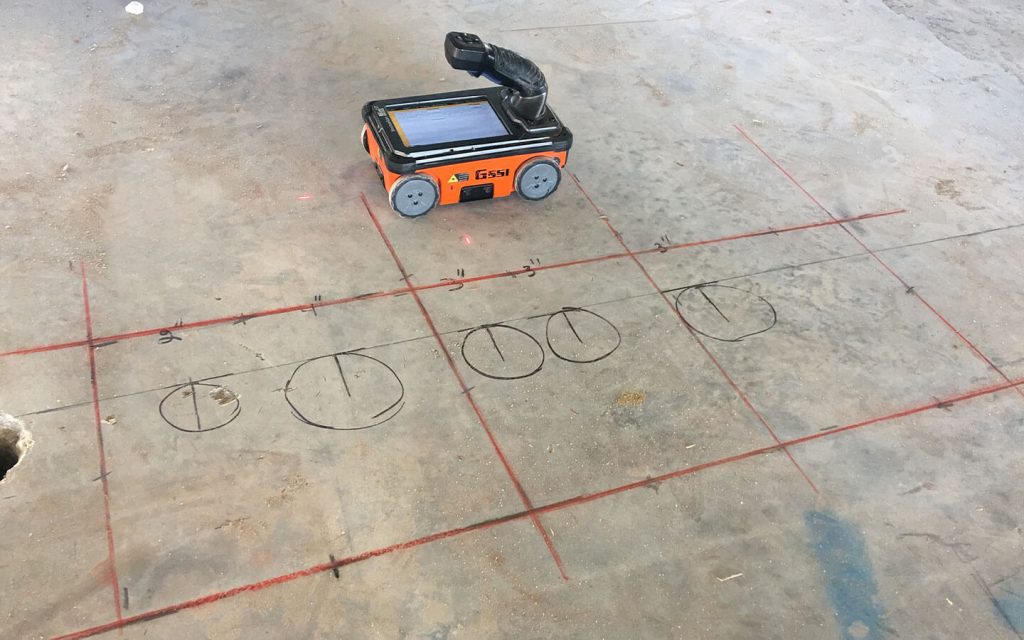Detailed Overview to RainierGPR Concrete Scanning Techniques
Detailed Overview to RainierGPR Concrete Scanning Techniques
Blog Article
Discovering the Midst: A Comprehensive Overview to Concrete Scanning and Its Diverse Applications
In the realm of construction and framework growth, the meticulous process of concrete scanning holds a pivotal role in guaranteeing the structural integrity and security of projects. As modern technology remains to advance, the applications of concrete scanning have increased far past mere surface-level evaluations. From finding rebar and post-tension cable televisions to drawing up conduits and spaces concealed within concrete frameworks, the capacities of contemporary scanning strategies are both excellent and important. However, real deepness of concrete scanning's possible reaches also further, branching into unanticipated fields and triggering ingenious options. The interconnected web of possibilities that concrete scanning provides is not just fascinating but also critical for the development of different industries.
Importance of Concrete Scanning
Comprehending the significance of concrete scanning is essential in guaranteeing the security and honesty of structures during building and improvement projects. Concrete scanning makes use of sophisticated technologies such as ground-penetrating radar (GPR) and electro-magnetic induction to discover embedded things, voids, or various other abnormalities within concrete frameworks.
Moreover, concrete scanning plays a crucial function in ensuring conformity with building ordinance and laws that mandate the security of existing architectural elements during construction activities. By properly mapping out the inner composition of concrete, scanning modern technologies allow building and construction professionals to make educated decisions that promote the structural security and longevity of buildings and facilities tasks. Essentially, the significance of concrete scanning hinges on its capacity to safeguard both the structural stability and the employees involved in building undertakings.
Technologies Used in Concrete Scanning
Concrete scanning counts on advanced innovations such as ground-penetrating radar (GPR) and electromagnetic induction to accurately discover ingrained items and abnormalities within concrete structures. Ground-penetrating radar operates by giving off high-frequency electro-magnetic waves right into the concrete.
Electromagnetic induction, on the other hand, works by creating magnetic fields around a concrete framework through a transmitter coil. When steel things exist within the concrete, they interfere with these electro-magnetic fields, causing eddy currents to flow through the metal. By determining the adjustments in the electro-magnetic fields with a receiver coil, the system can identify the location of metal things in the concrete.
These sophisticated technologies play a vital role in non-destructive testing, guaranteeing the safety and integrity of concrete frameworks in different markets.
Applications in Construction Sector
Within the building and construction market, concrete scanning innovation discovers diverse applications that boost job efficiency and safety. One key application is the discovery of rebar, post-tension cords, and other ingrained items prior to exploration or cutting right into concrete frameworks. By properly drawing up these elements, construction groups can stay clear of costly problems, make certain architectural honesty, and avoid possible security threats. In addition, concrete scanning is made use of for locating gaps, such as air pockets or areas of deterioration within concrete, which can jeopardize the overall stamina of a framework. By identifying these spaces early, construction experts can take essential steps to address them and maintain the toughness of the building. Additionally, concrete scanning plays a crucial duty in high quality control by confirming the density of concrete covers over support, guaranteeing conformity with design specs and criteria. Generally, the applications of concrete her latest blog scanning in the building industry add considerably to simplifying project process, minimizing threats, and delivering top notch outcomes.

Safety Benefits of Concrete Scanning
In the world of construction safety and security, the implementation of concrete scanning modern technology offers a critical benefit in preemptively identifying prospective dangers and fortifying architectural integrity. By using innovative scanning methods such as ground-penetrating radar (GPR) and electro-magnetic induction, building teams can precisely find rebar, post-tension wires, channels, and various other surprise things within concrete structures. This aggressive method considerably minimizes the threat of accidental strikes throughout boring, reducing, or coring tasks, therefore preventing costly problems, injuries, and job hold-ups.
Moreover, concrete scanning enhances employee safety by providing real-time information about the structural problem of concrete components. This information makes it possible for building experts to evaluate the integrity of existing structures, identify wear and tear or flaws, and make informed choices pertaining to repair and upkeep treatments. By dealing with prospective safety problems promptly, concrete scanning adds to developing a safe and secure workplace and reducing the probability of architectural failures or accidents on building and construction websites. Ultimately, the safety advantages of concrete scanning not only protect assets and lives but also maintain market standards for quality and reliability.
Future Fads in Concrete Scanning
Arising developments in scanning modern technology are poised to transform the field of concrete examination and analysis. One major fad that is obtaining traction is the integration of expert system (AI) and artificial intelligence algorithms into concrete scanning tools. By utilizing the power of AI, these systems can examine huge amounts of information accumulated during scanning processes to supply more comprehensive and precise understandings right into the condition of concrete structures. This can assist in discovering surprise problems, anticipating possible architectural failings, and also recommending maintenance methods.
One more substantial trend is the development of even more mobile and straightforward scanning devices. Miniaturization of scanning equipment allows for much easier accessibility to constrained areas and remote places, making assessments much more effective and detailed. Additionally, advancements in wireless communication technologies make it possible for real-time information transfer and analysis, promoting quicker decision-making procedures.
Additionally, there is a growing concentrate on sustainability in concrete scanning technologies - RainierGPR Concrete Scanning. Manufacturers are increasingly including environmentally friendly materials and energy-efficient attributes into their tools to reduce ecological influence. These future trends are readied to boost the effectiveness, accuracy, and sustainability of concrete scanning practices, forming the market's future landscape
Conclusion
In verdict, concrete scanning plays a crucial duty in the construction industry by guaranteeing the security and efficiency of various tasks. As technology developments, the future of concrete scanning holds appealing advancements for enhancing building and construction processes.

Report this page